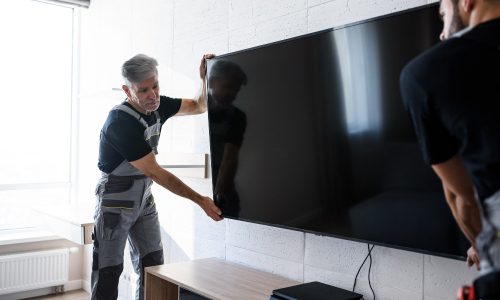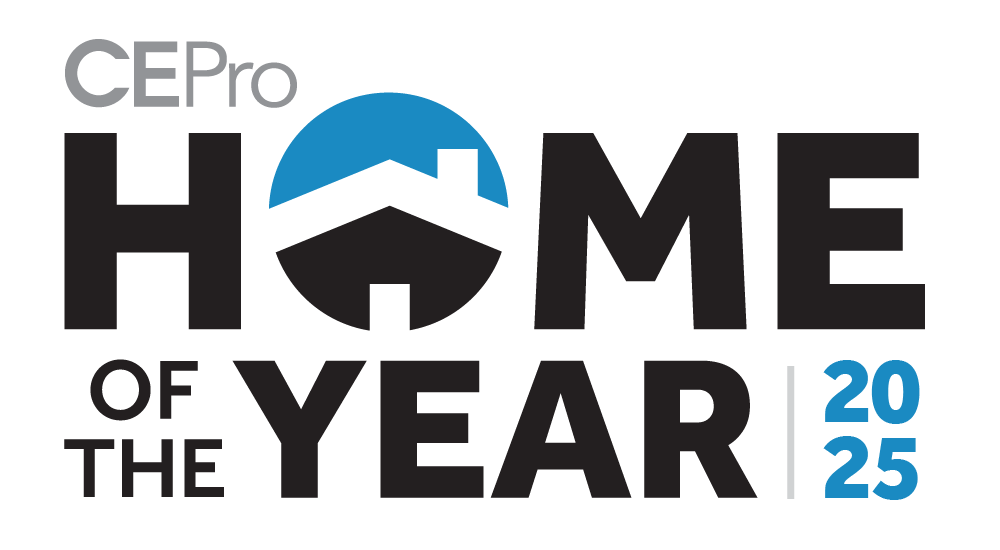As flat screen displays became progressively thinner, lighter, cheaper, and nudged (okay, pushed) bulky CRTs into extinction, it became a lot easier and more desirable to mount TVs onto the wall and get those video set-ups like you used to see in sci-fi movies. Of course, because the concept of a wall-mounted TV has become so popular, there are now many different types of TV mounts on the market that can tilt, swivel, rotate, extend and even drop down from the ceiling. This can make finding the right TV mount for your project a bit of a hassle.
Once you figure out where you want to place your TV and where the audience is going to sit, finding the appropriate mount becomes a little bit easier. Even then, however, there’s still a ton of options for someone to pick from.
Sure, you can go with a traditional fixed mount for a no fuss solution for a client that won’t need to adjust the TV once installed, but the capabilities of many TV mounts go far beyond that. For example, using a fully articulating mount can allow users to position the screen along a 360-degree axis, making sure every spot in the room has the best viewing angle. A motorized-dropdown mount, meanwhile can completely conceal the TV when not in use, only to have it drop down into view on movie night.
So here, we’re going to look at the different types of TV mounts that are out there, what they can do, and what it takes to find the mount that’s right for your project.
A Quick List of the Different Types of TV Mounts
- Fixed Mount
- Tilt Mount
- Fully Articulating Mounts
- Recessed Mounts
- Ceiling Mounts
- Furniture Mounts
- Motorized Mounts
Before Making the Purchase: Make Sure the Mount Specs Match Up to Your TV
First and foremost, you need to make sure the mount you’re getting can accommodate the size and weight of your TV. The UL safety rating should always be listed on the TV mount’s box and should always be consulted before you buy. A special item to note is that the weight of the TV mount needs to be included in these calculations. If the mount you have selected for the job only covers the total weight capacity of the TV, then the mount won’t be able to support the system. A mount needs to be able to support its own weight, as well as the TV’s.
As a good rule of thumb, be sure to always double-check the UL-listing. For example, one manufacturer might say that, while its double-stud mounts are UL-listed at 150 to 200 pounds capacity, they can really hold 4x that weight. Yes, the Underwriters Laboratories-listed weight capacity is usually very conservative, but why risk it?

The next checklist item to examine is what sized TV the mount can fit onto. For this, you’re looking to match the VESA pattern size of your TV with that of your TV mount. VESA stands for the Video Electronics Standards Association and acts as a uniform standard to facilitate the simple, easy and safe integration of a TV and a mount. If the pattern sizes match up, that means your mount and TV are compatible.
This information can usually be found either in the TV manual, or online. It can also be found by measuring the horizontal and vertical distance between the four mounting holes on the back of the TV in millimeters, which then translate into the dimensions used for VESA pattern sizes. For instance, if the horizontal distance between the holes is 600mm and the vertical distance is 400mm, then the VESA size is 600×400.
Once that’s squared away, finding the perfect TV mount comes down to knowing what each fixture can do. With that in mind, here’s all you need to know about the different types of TV mounts.
Fixed Wall Mounts
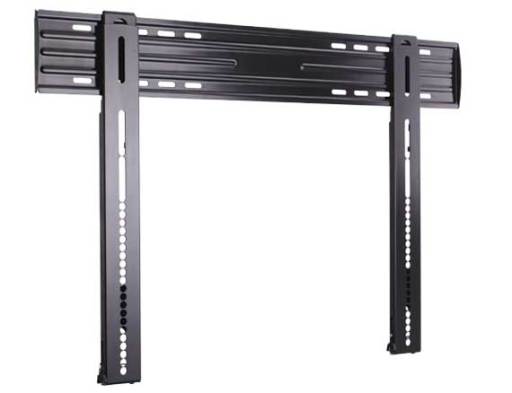
The fixed mount (like the Sanus Model LL11 pictured above) provides a simple solution for installations where a fixed viewing location is desired. Most hold the display an inch or two from the wall or you can opt for an ultra-slim model that hugs the wall with a gap of a half inch or less. While most fixed TV mounts require one or more studs for stability, Vanco offers a “stud-free” model that uses braces behind the wall to support flat-panel TVs weighing up to 150 pounds.
Tilt Mounts
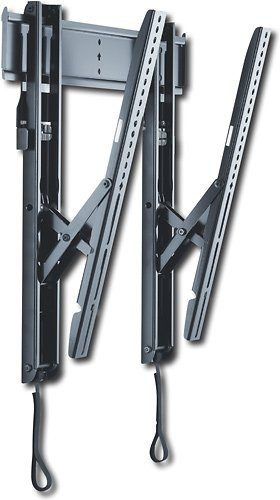
Moving a step up in functionality, the tilt mount is designed primarily for situations where the TV must be mounted high on the wall—above a fireplace, for instance—requiring the screen to be angled down for optimum viewing.
There are two basic varieties: Those providing continuous adjustment, typically between 0 and 15 degrees (some tilt slightly upward as well), and those with preset locking points. Tilt mounts also tend to hold the TV an inch or farther from the wall than fixed mounts.
Offering a unique twist, Chief sells a mount with a built-in compartment for concealing a media player; the tradeoff is a 4-inch gap between the wall and TV.
Fully Articulating TV Mounts
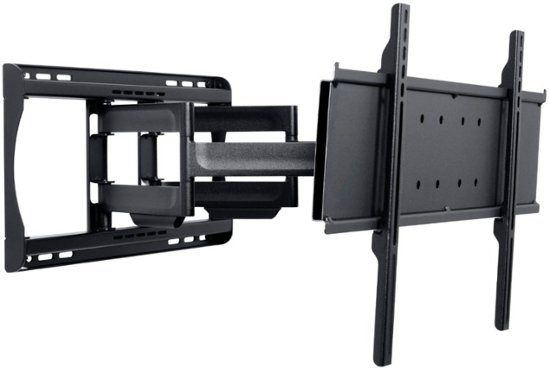
The articulating (or pivoting) mount is ideal for rooms with a large or off-center seating area where versatility is necessary to position the TV for optimum viewing. Although a huge assortment of models are available, “articulating” usually refers to a mount that has one or two support arms and multiple pivot points allowing it to pull out from the wall (and retract), tilt up and down, swivel, and pan left and right.
Most models are continuously adjustable, providing 90 or 180 degrees of horizontal movement and 5/15 degrees of (up/down) tilt action, though some offer a greater (or more restricted) range of motion.
Articulating mounts extend from 1 to 3 feet from the wall and retract to a “home position” 2 to 4 inches from the wall, depending on the type of mount and size of the TV. Variations include slim profile models that protrude less than 2 inches from the wall, models designed for corner placement and mounts that rotate the screen 90 degrees for a portrait orientation.
It’s important to read manufacturer’s descriptions for specific models to make sure you understand what they can and can’t do.
Recessed Mounts
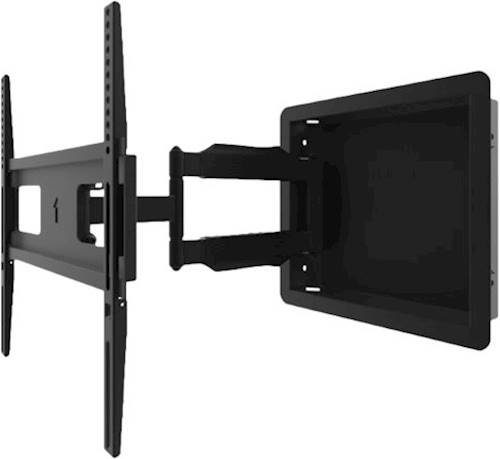
In-wall mounting is perfect for those who want an ultra-clean look where the TV really hugs the wall. Several companies offer backboxes that conceal mounting hardware when the TV is retracted; they sit between studs and can accommodate articulating mounts that extend 1 to 2 feet from the wall.
Going a step further, Premier Mounts makes a box with a built-in fan that enables the TV to be recessed so its screen is flush with the wall. Read on down to “Motorized Mounts” for more in-wall options.
It’s also worth noting that while recessed flat screens look great, creating a recessed niche often means the 2×4 wall studs are no longer behind the TV. In that case, additional support must be added to a recessed niche, usually in the form of a ¾-inch (minimum) sheet of plywood as a wall plate.
Ceiling Mounts
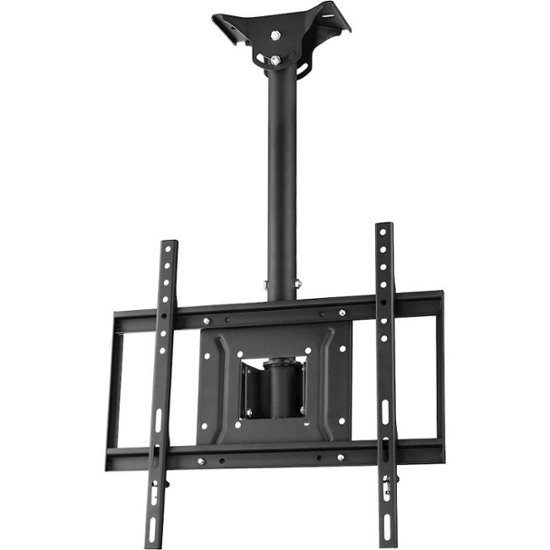
If wall mounting isn’t possible (or desired), several companies offer mounts that suspend the TV from the ceiling, usually on a straight or curved column. Most models provide one or more adjustments for height, tilt or swivel (many turn 360 degrees).
Simple, fixed models are also available for installations where a stationary screen is acceptable. Other variations include models designed for suspended ceilings and a truss mount from SnapAV for hanging the TV in an open area; instead of attaching directly to the ceiling, the post supporting the TV is secured to a horizontal pole with U bolts. Similar to In-Walls, ceiling mounts also come with a variety of motorized options
Furniture Mounts
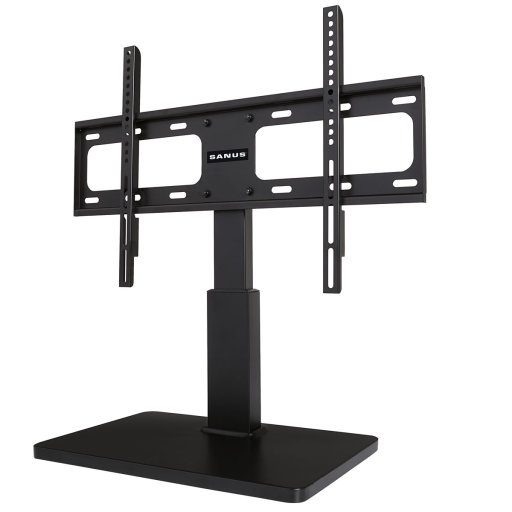
Furniture mounts are designed to secure a flat-panel TV atop a cabinet, counter, desk or other furniture and offer a practical alternative to wall mounting. Most common is a tilt/swivel mount with a vertical post that supports the display, conceals wiring and, in some cases, rotates 360 degrees; height can also be adjusted on some models.
Variations for small screens include freestanding stands, under-cabinet mounts, a highly flexible mount from Peerless with a hinged arm and four pivot points and a low-profile stand from Chief that tilts 90 degrees allowing the monitor to lay flat (screen up). If furniture mounting is not in the cards, a few companies also offer floor-mount TV pedestals.
Motorized TV Mounts
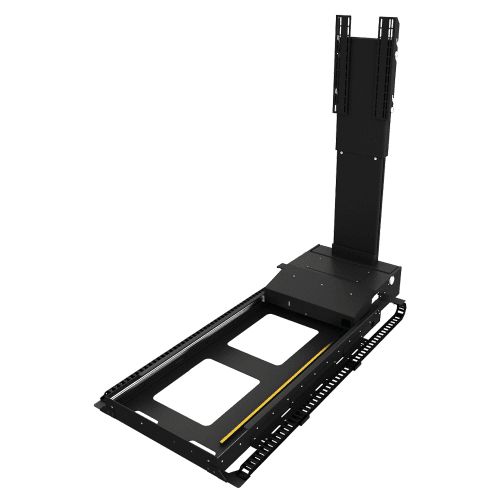
Enter the realm of motorization and you find an intriguing variety of remote-controllable flat-panel mounts that run the gamut from “simple” wall brackets that extend, retract, tilt and swivel to intricate concealment systems befitting of a James Bond movie.
Motorized mounts, available from a dozen or so companies (including Nexus 21 and its Apex TV mount), include stationary and swiveling mechanisms for hiding a TV in the ceiling, wall, floor or a cabinet from which it will drop down, slide out or pop-up on command. Other concealment tricks include sliding-door systems and an apparatus from Future Automation that extends the TV forward—allowing it to clear, say, a mantle—before dropping it down into position.
Perhaps the most exotic example of motorization is Activated Designs’ Under Bed Lift: Hit the remote and the TV extends out from under the foot of the bed, turns 90 degrees and rises gracefully into position; it even swivels if you decide you want to watch your favorite show while getting ready for bed.
There’s also Trak-kit’s customizable “mobile TV” system, which suspends any size TV from a recessed ceiling track, allowing it to glide across the room, move up and down and even rotate 360 degrees.
After the Purchase: Mounting Your TV to the Wall
Once you’ve decided on what type of TV mount you want to use, next comes the installation.
Baseline, most TV mounts come with basic instructions on how to affix it to the back of the TV, but from there, things may start to get a little tricky. Say you’re installing an in-wall mount that requires you to remove the studs you otherwise would’ve hung the mount on: what do you do then? How about trying to install a mount on something other than drywall? Metal studs?
If you have any questions regarding getting started mounting a TV on a wall, be sure to check out CE Pro‘s article on mounting a TV to a wall. We also have a list of some of the best TV mounts professional installers are using today.
Additionally, for a comprehensive listing of companies that make mounts, lifts and concealment hardware for flat screen TVs, you can check out both AV-IQ and CE Pro-IQ.
